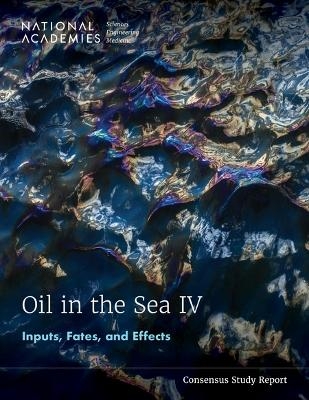
Oil in the Sea IV
Inputs, Fates, and Effects
Seiten
2023
National Academies Press (Verlag)
978-0-309-27429-6 (ISBN)
National Academies Press (Verlag)
978-0-309-27429-6 (ISBN)
Oil and natural gas represent more than 50 percent of the worldwide energy supply, with high energy demand driven by population growth and improving standards of living. Despite significant progress in reducing the amount of oil in the sea from consumption, exploration, transportation, and production, risks remain. This report, the fourth in a series, documents the current state-of-knowledge on inputs, fates and effects of oil in the sea, reflecting almost 20 additional years of research, including long-term effects from spills such as the Exxon Valdez and a decade-long boom in oil spill science research following the Deepwater Horizon oil spill.
The report finds that land-based sources of oil are the biggest input of oil to the sea, far outweighing other sources, and it also notes that the effects of chronic inputs on the marine environment, such as land-based runoff, are very different than that from an acute input, such as a spill. Steps to prevent chronic land-based oil inputs include reducing gasoline vehicle usage, improving fuel efficiency, increasing usage of electric vehicles, replacing older vehicles. The report identifies research gaps and provides specific recommendations aimed at preventing future accidental spills and ensuring oil spill responders are equipped with the best response tools and information to limit oil's impact on the marine environment.
Table of Contents
Front Matter
Summary
1 Introduction
2 Petroleum as a Complex Chemical Mixture
3 Input of Oil to the Sea
4 Accidental Spill Mitigation
5 Fates of Oil in the Sea
6 Effects of Oil in the Sea
7 Recommendations
References
Acronyms and Abbreviations
Glossary
Appendix A: North American Zone Descriptions
Appendix B: Energy Outlook Data Sources
Appendix C: Estimating Land-Based Sources of Oil in the Sea
Appendix D: Regional Values of Water-to-Oil Ratio for Calculating Inputs from Produced Water
Appendix E: Common Shoreline Response Options
Appendix F: Technical Aspects of Equations and Models for Droplet Breakup in Turbulent Flows
Appendix G: Classification of Intertidal, Subtidal, Ice, and On-Water Areas
Appendix H: Omics Techniques
Appendix I: Table of Common Hydrocarbon Degraders
Appendix J: Committee Biographies
The report finds that land-based sources of oil are the biggest input of oil to the sea, far outweighing other sources, and it also notes that the effects of chronic inputs on the marine environment, such as land-based runoff, are very different than that from an acute input, such as a spill. Steps to prevent chronic land-based oil inputs include reducing gasoline vehicle usage, improving fuel efficiency, increasing usage of electric vehicles, replacing older vehicles. The report identifies research gaps and provides specific recommendations aimed at preventing future accidental spills and ensuring oil spill responders are equipped with the best response tools and information to limit oil's impact on the marine environment.
Table of Contents
Front Matter
Summary
1 Introduction
2 Petroleum as a Complex Chemical Mixture
3 Input of Oil to the Sea
4 Accidental Spill Mitigation
5 Fates of Oil in the Sea
6 Effects of Oil in the Sea
7 Recommendations
References
Acronyms and Abbreviations
Glossary
Appendix A: North American Zone Descriptions
Appendix B: Energy Outlook Data Sources
Appendix C: Estimating Land-Based Sources of Oil in the Sea
Appendix D: Regional Values of Water-to-Oil Ratio for Calculating Inputs from Produced Water
Appendix E: Common Shoreline Response Options
Appendix F: Technical Aspects of Equations and Models for Droplet Breakup in Turbulent Flows
Appendix G: Classification of Intertidal, Subtidal, Ice, and On-Water Areas
Appendix H: Omics Techniques
Appendix I: Table of Common Hydrocarbon Degraders
Appendix J: Committee Biographies
| Erscheinungsdatum | 05.01.2023 |
|---|---|
| Verlagsort | Washington |
| Sprache | englisch |
| Maße | 216 x 279 mm |
| Themenwelt | Naturwissenschaften ► Biologie ► Ökologie / Naturschutz |
| Naturwissenschaften ► Geowissenschaften ► Hydrologie / Ozeanografie | |
| ISBN-10 | 0-309-27429-X / 030927429X |
| ISBN-13 | 978-0-309-27429-6 / 9780309274296 |
| Zustand | Neuware |
| Haben Sie eine Frage zum Produkt? |
Mehr entdecken
aus dem Bereich
aus dem Bereich
Lehrbuch zu Grundlagen, Technologie und Praxis
Buch | Hardcover (2022)
Hanser (Verlag)
34,99 €


